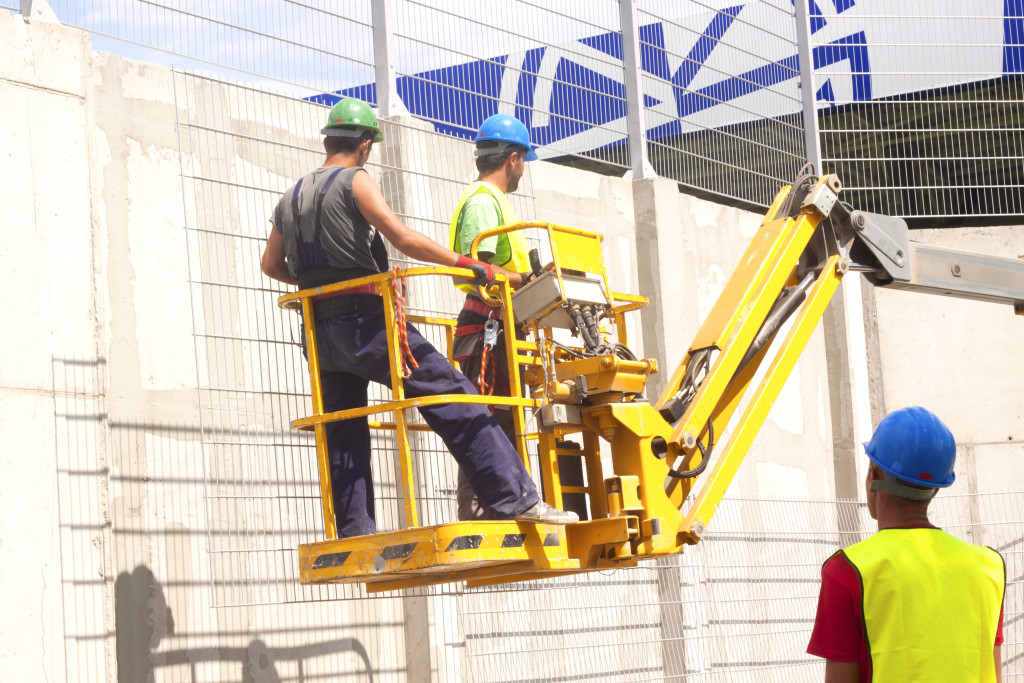- Establishing safety policies and providing regular training and supervision are essential for ensuring safety at a construction site.
- Identifying hazards and creating a culture of safety should be done to ensure workers remain safe on the job.
- Signage at the work site, maintenance of equipment, and knowledge of the equipment used should be considered.
- These steps can reduce liability while protecting workers from harm and ensuring a safe environment at construction sites.
In 2020, the construction industry was responsible for 21 percent of work-related deaths. Out of these fatalities, falls to lower levels accounted for nearly one-third – almost an entire half or 46.1 percent of all fatal slips and trips nationwide! This highlights why safety must be at the forefront in this line of work if workers are expected to stay safe on job sites.
Keeping a construction site safe is a massive undertaking, and it requires the cooperation of everyone involved in the project. Everyone, from business owners to entrepreneurs, must work together to ensure that safety remains a top priority. This blog post will discuss some of the best practices for ensuring safety at a construction site.

Establishing Policies and Procedures
The first step in creating a safe construction site is establishing clear policies and procedures. These should include all relevant regulations related to construction safety from local, state, and federal agencies. In addition, your policies should include guidelines for the proper use of personal protective equipment (PPE), such as hard hats, gloves, and other items needed to protect workers from hazards on the job. All workers must understand these policies and adhere to them at all times while working onsite.
Safety Manual
You should also create a safety manual to provide workers with clear and easy-to-understand instructions for performing their jobs safely. This should include information about using tools, equipment, and materials properly. It should also cover hazardous waste disposal, emergency procedures, and other relevant topics.
Regular Training and Supervision
You should also train your workers to ensure they can safely perform their jobs. This includes providing safety instructions on safely using tools, machinery, and materials and teaching them proper lifting techniques. It would help if you also had supervisors at the work site who could observe employees and remind them of safety protocols.
You should always have a first aid kit on hand in case of an accident or injury. In addition, you should make sure that your workers are familiar with the location of fire extinguishers, exits, and other emergency equipment.
Identifying Hazards
The next step is identifying potential hazards at your construction site. This includes anything from steep slopes to overhead power lines or unstable ground conditions. Once you have identified these hazards, you can create an action plan to address them to minimize the risk of onsite injury or death.
Creating a Culture of Safety
You should also make an effort to create a culture of safety at your construction site by actively encouraging employees and subcontractors to speak up if they feel unsafe, allowing workers to take scheduled breaks throughout the day, and always rewarding safe work practices. Everyone should also follow safety regulations strictly.
It would help if you also provided suitable signages at the work site that remind workers and supervisors of safety protocols. These could include signs warning against unsafe behaviors, cautionary labels on hazardous materials, or identification tags for hazardous equipment.

Evaluate Materials and Equipment at the Work Site
You should evaluate materials and equipment at the job site regularly to make sure they are in proper working condition. This includes inspecting tools, machinery, scaffolding, ladders, cranes, and other equipment used onsite. You should also perform regular tests on materials such as concrete or steel to ensure they meet safety specifications.
Knowledge About the Equipment Used
Making sure the workers know the equipment they are using is also essential. This includes an overview of the equipment, its capabilities and limitations, and safety protocols for operating it correctly. For instance, they should know the different types of wire rope slings. Knowing the difference among the different types allows you to use one suitable for your needs. If you’re building a multi-floor structure, you should use a steel cable that’s strong enough to carry more than 200 tons of weight.
Ensure Proper Equipment Maintenance
It’s also essential to ensure that all equipment is properly maintained. This includes regularly inspecting tools and machines for damage, ensuring all safety features are intact, and properly lubricating moving parts. Equipment maintenance is essential in preventing accidents and injuries onsite.
Creating a safe environment at a construction site requires cooperation from everyone involved—from business owners to subcontractors and employees. By taking the tips in the article seriously, businesses can reduce their liability while protecting their employees from harm—which ultimately makes everybody happy!







